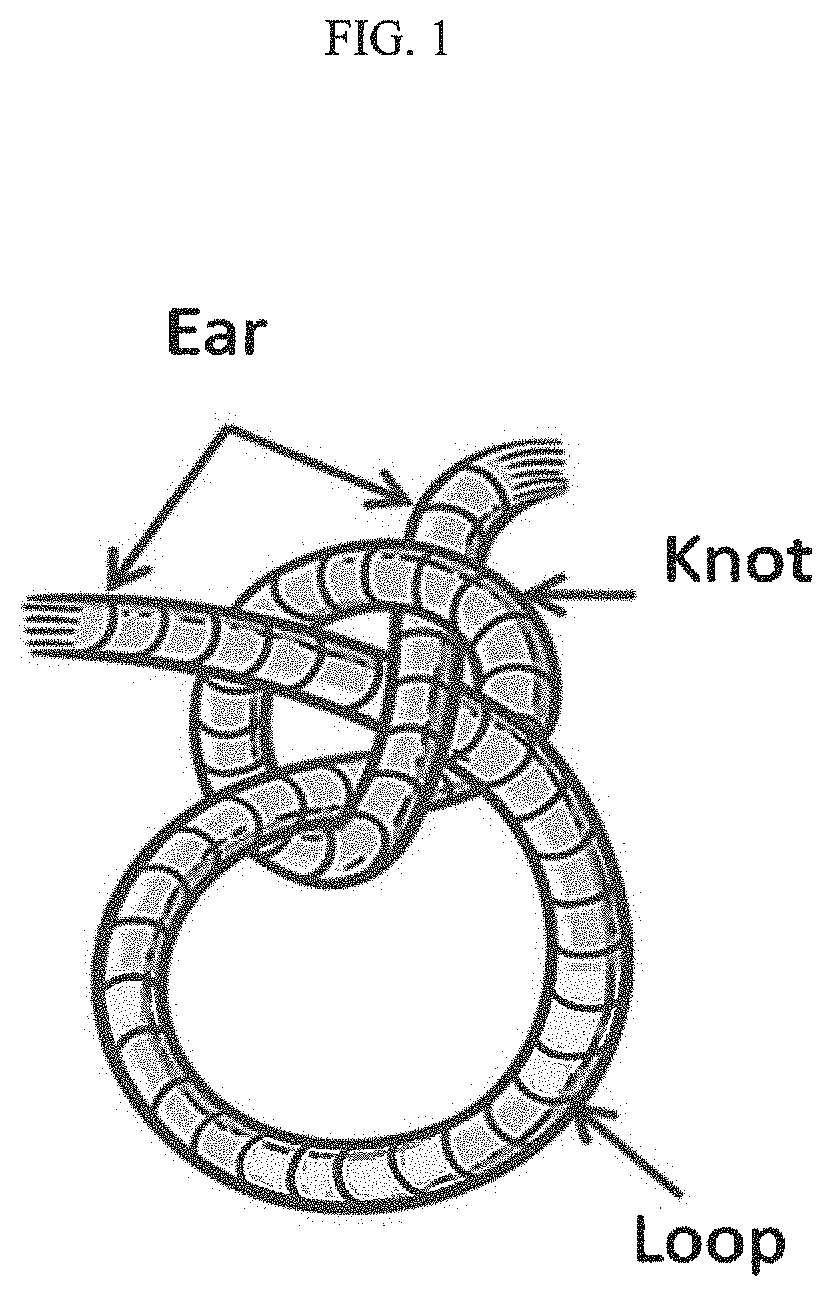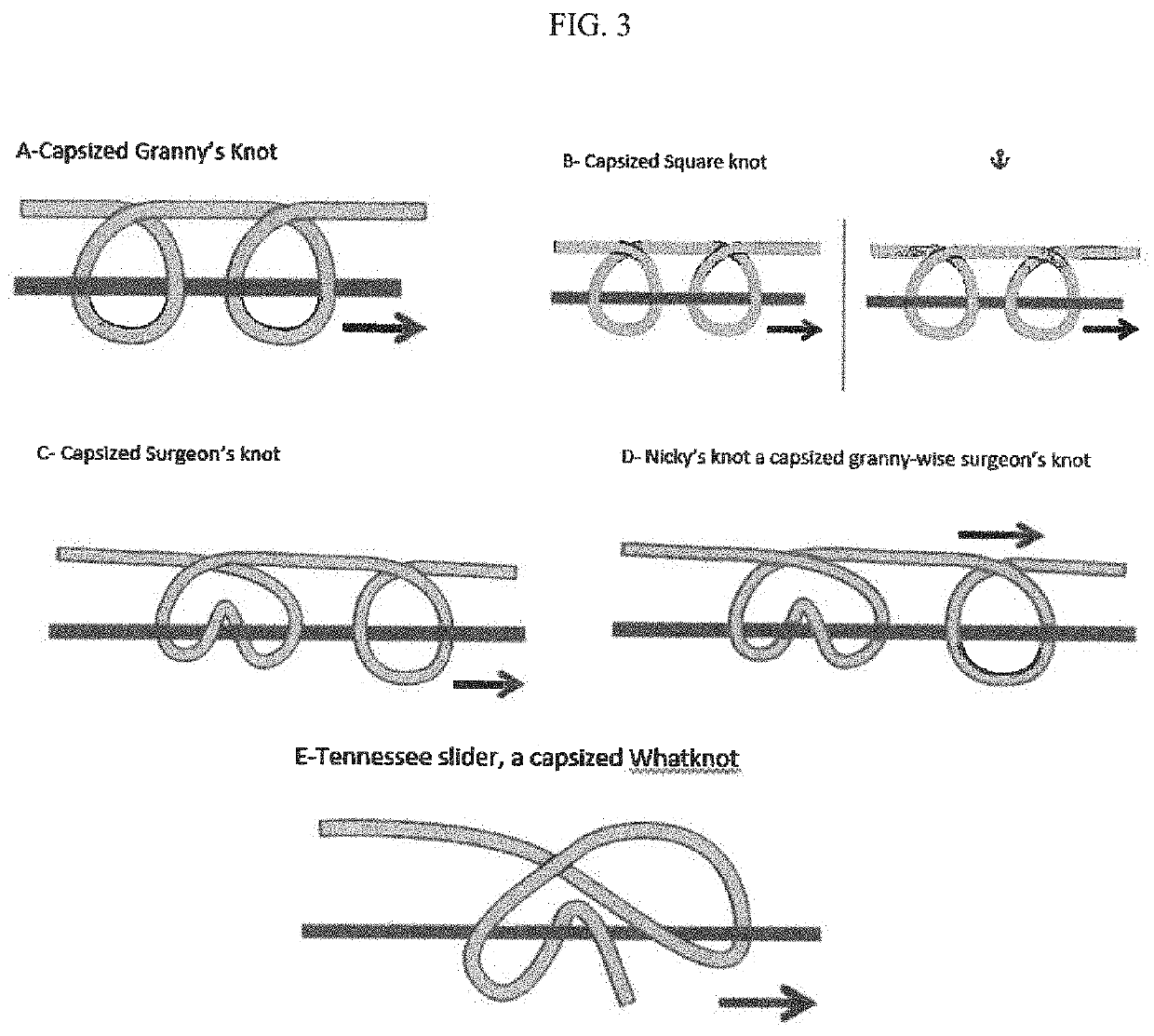Many advances and technologies like clips, staples, pre-tied suture loop,
tissue adhesives,
laser tissue welding,
Harmonic, Ligasure, electro-cautery are used in laparoscopic operations to ease the tasks by decreasing the need for knot tying, yet no surgeon can feel confident in attempting
laparoscopic surgery before mastering the laparoscopic knot tying and
suturing techniques, because as the patient safety is at stake during operation, surgeon cannot exclusively depend on these technologies which have their own limitations in applied
surgery and are more expensive and
machine dependent.
Using extra suture and large unnecessary knots will trigger
foreign body reaction to suture material inside the tissues.
If excess tension is applied while
staking the knot, it might cause breaking of suture or
cut the tissue. if less tension is applied while stacking, an insecure loose knot may form and in a surgical case, it may cause a catastrophe.
This is because if the size of the thread is not appropriate for
diameter of the needle the knot will be too loose or too tight.
If this step to change the sliding configuration to non-sliding flat knot configuration is not done, the knot may slip on standing end and loosen.
It is noteworthy to mention that after securing the knot with appropriate RHAPs, additional half hitches will not increase the security of knot, but it increases tissue
forging body reaction and knot failure due to material failure (breakage).
In
laparoscopy the ports are fixed, and the freedom of movements is lost.
During
laparoscopy not only the surgeon's movements are restricted, but also all the muscles of arms shoulder, neck and back are activated and under tension, this causes
lactic acid production in muscles and tendons and hence disabling
muscle pain builds up, because of which the efficiency of surgeon reduces as the time of
surgery increases.
When the
handle of instrument is moved to any direction the tip of instrument moves in opposite direction due to fulcrum effect, it makes hand eye coordination difficulty.
Due to decoupling of
visual axis and motor axis and two-dimensional perceptions during laparoscopic knot tying a lot of extra movements are made, for example, over shooting of instruments, these imprecisions of movements can cause damage to patient's tissues by the jaws of instruments during the attempts to perform a laparoscopic knot.
All these laparoscopic techniques aim to use the laparoscopic instruments to imitate surgeon's hands movement in knot tying which is ergonomically difficult for surgeon and can cause trauma to him on repeated. prolonged laparoscopic surgeries.
The major drawback of both, intracorporeal knot tying and non-sliding
extracorporeal knot tying, is that the loop may loosen before second throw is placed on first throw to secure it.
In
extracorporeal non-sliding knot tying, surgeon must note that if all the half hitches are made keeping the standing end on tension, the knot will have sliding property and is not secure.
The main drawback of the sliding knot or slip knot tying technique is that its components should be stacked properly on the standing end otherwise its shape and configuration will change, as a result of this, either it will not slide on standing end or its loops are loose so they will form a faulty knot which does not have the property of intended slip knot.
In addition, these loose knots allow more suture material to be left at
surgical site causing more
forging body reaction and increase chance of
inflammation and infection.
In addition, gloved hands have less
tactile sensation so these factors increase the chances of faulty sliding knot formation during laparoscopic extracorporeal knot tying.
 Login to View More
Login to View More  Login to View More
Login to View More 


